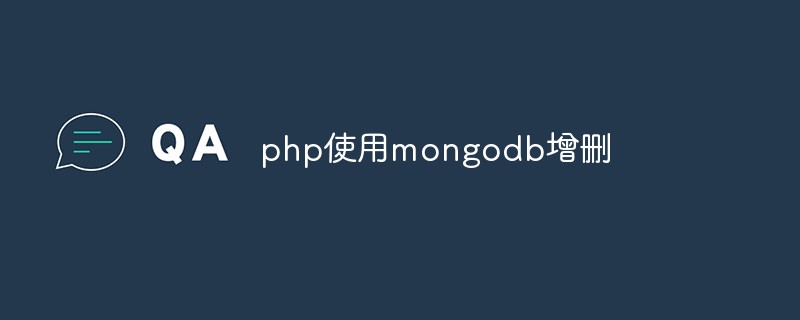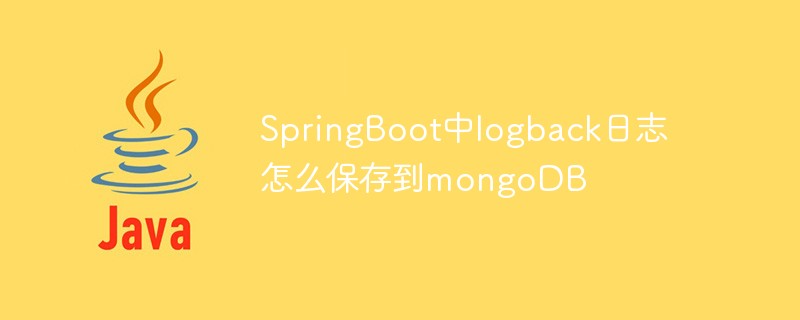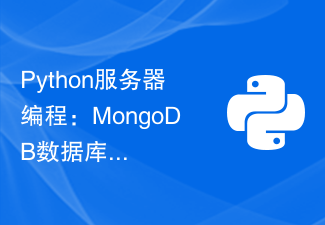前面说到了mongodb安装,配置,集群,以及php的插入与更新等,请参考: mongodb 。 下面说一下,mongodb select的常用操作 测试数据 { "_id" : 1, "title" : "红楼梦", "auther" : "曹雪芹", "typeColumn" : "test", "money" : 80, "code" : 10 }{ "_id" : 2
前面说到了mongodb安装,配置,集群,以及php的插入与更新等,请参考:mongodb。
下面说一下,mongodb select的常用操作
测试数据
{ "_id" : 1, "title" : "红楼梦", "auther" : "曹雪芹", "typeColumn" : "test", "money" : 80, "code" : 10 }
{ "_id" : 2, "title" : "围城", "auther" : "钱钟书", "typeColumn" : "test", "money" : 56, "code" : 20 }
{ "_id" : 3, "title" : "朝发白帝城", "auther" : "李白", "typeColumn" : "test", "money" : 30, "code" : 30 }
{ "_id" : 4, "title" : "将近酒", "auther" : "李白", "money" : 90, "code" : 40 }
1,取表条数
> db.books.count();
4
> db.books.find().count();
4
> db.books.count({auther: "李白" });
2
> db.books.find({money:{$gt:40,$lte:60}}).count();
1
> db.books.count({money:{$gt:40,$lte:60}});
1
php代码如下,按顺序对应的
$collection->count(); //结果:4
$collection->find()->count(); //结果:4
$collection->count(array("auther"=>"李白")); //结果:2
$collection->find(array("money"=>array('$gt'=>40,'$lte'=>60)))->count(); //结果:1
$collection->count(array("money"=>array('$gt'=>40,'$lte'=>60))); //结果:1
提示:$gt为大于、$gte为大于等于、$lt为小于、$lte为小于等于、$ne为不等于、$exists不存在、$in指定范围、$nin指定不在某范围
2,取单条数据
> db.books.findOne();
{
??????? "_id" : 1,
??????? "title" : "红楼梦",
??????? "auther" : "曹雪芹",
??????? "typeColumn" : "test",
??????? "money" : 80,
??????? "code" : 10
}
> db.books.findOne({auther: "李白" });
{
??????? "_id" : 3,
??????? "title" : "朝发白帝城",
??????? "auther" : "李白",
??????? "typeColumn" : "test",
??????? "money" : 30,
??????? "code" : 30
}
php代码如下,按顺序对应的
$collection->findOne();
$collection->findOne(array("auther"=>"李白"));
3,find?snapshot 游标
> db.books.find( { $query: {auther: "李白" }, $snapshot: true } );
{ "_id" : 3, "title" : "朝发白帝城", "auther" : "李白", "typeColumn" : "test", "money" : 30, "code" : 30 }
{ "_id" : 4, "title" : "将近酒", "auther" : "李白", "money" : 90, "code" : 40 }
php代码如下
/**
* 注意:
* 在我们做了find()操作,获得 $result 游标之后,这个游标还是动态的.
* 换句话说,在我find()之后,到我的游标循环完成这段时间,如果再有符合条件的记录被插入到collection,那么这些记录也会被$result 获得.
*/
$result = $collection->find(array("auther"=>"李白"))->snapshot();
foreach ($result as $id => $value) {
var_dump($value);
}
4,自定义列显示
> db.books.find({},{"money":0,"auther":0}); //money和auther不显示
{ "_id" : 1, "title" : "红楼梦", "typeColumn" : "test", "code" : 10 }
{ "_id" : 2, "title" : "围城", "typeColumn" : "test", "code" : 20 }
{ "_id" : 3, "title" : "朝发白帝城", "typeColumn" : "test", "code" : 30 }
{ "_id" : 4, "title" : "将近酒", "code" : 40 }
> db.books.find({},{"title":1}); //只显示title列
{ "_id" : 1, "title" : "红楼梦" }
{ "_id" : 2, "title" : "围城" }
{ "_id" : 3, "title" : "朝发白帝城" }
{ "_id" : 4, "title" : "将近酒" }
/**
*money在60到100之间,typecolumn和money二列必须存在
*/
> db.books.find({money:{$gt:60,$lte:100}},{"typeColumn":1,"money":1});
{ "_id" : 1, "typeColumn" : "test", "money" : 80 }
{ "_id" : 4, "money" : 90 }
php代码如下,按顺序对应的
$result = $collection->find()->fields(array("auther"=>false,"money"=>false)); //不显示auther和money列
$result = $collection->find()->fields(array("title"=>true)); //只显示title列
/**
*money在60到100之间,typecolumn和money二列必须存在
*/
$where=array('typeColumn'=>array('$exists'=>true),'money'=>array('$exists'=>true,'$gte'=>60,'$lte'=>100));
$result = $collection->find($where);
5,分页
> db.books.find().skip(1).limit(1); //跳过第条,取一条
{ "_id" : 2, "title" : "围城", "auther" : "钱钟书", "typeColumn" : "test", "money" : 56, "code" : 20 }
这根mysql,limit,offset有点类似,php代码如下
$result = $collection->find()->limit(1)->skip(1);//跳过 1 条记录,取出 1条
6,排序
> db.books.find().sort({money:1,code:-1}); //1表示降序 -1表示升序,参数的先后影响排序顺序?
{ "_id" : 3, "title" : "朝发白帝城", "auther" : "李白", "typeColumn" : "test", "money" : 30, "code" : 30 }
{ "_id" : 2, "title" : "围城", "auther" : "钱钟书", "typeColumn" : "test", "money" : 56, "code" : 20 }
{ "_id" : 1, "title" : "红楼梦", "auther" : "曹雪芹", "typeColumn" : "test", "money" : 80, "code" : 10 }
{ "_id" : 4, "title" : "将近酒", "auther" : "李白", "money" : 90, "code" : 40 }
php代码如下
$result = $collection->find()->sort(array('code'=>1,'money'=>-1));
7,模糊查询
> db.books.find({"title":/城/}); //like '%str%' 糊查询集合中的数据
{ "_id" : 2, "title" : "围城", "auther" : "钱钟书", "typeColumn" : "test", "money" : 56, "code" : 20 }
{ "_id" : 3, "title" : "朝发白帝城", "auther" : "李白", "typeColumn" : "test", "money" : 30, "code" : 30 }
> db.books.find({"auther":/^李/}); //like 'str%' 糊查询集合中的数据
{ "_id" : 3, "title" : "朝发白帝城", "auther" : "李白", "typeColumn" : "test", "money" : 30, "code" : 30 }
{ "_id" : 4, "title" : "将近酒", "auther" : "李白", "money" : 90, "code" : 40 }
> db.books.find({"auther":/书$/}); //like '%str' 糊查询集合中的数据
{ "_id" : 2, "title" : "围城", "auther" : "钱钟书", "typeColumn" : "test", "money" : 56, "code" : 20 }
> db.books.find( { "title": { $regex: '城', $options: 'i' } } ); //like '%str%' 糊查询集合中的数据
{ "_id" : 2, "title" : "围城", "auther" : "钱钟书", "typeColumn" : "test", "money" : 56, "code" : 20 }
{ "_id" : 3, "title" : "朝发白帝城", "auther" : "李白", "typeColumn" : "test", "money" : 30, "code" : 30 }
php代码如下,按顺序对应的
$param = array("title" => new MongoRegex('/城/'));
$result = $collection->find($param);
$param = array("auther" => new MongoRegex('/^李/'));
$result = $collection->find($param);
$param = array("auther" => new MongoRegex('/书$/'));
$result = $collection->find($param);
8,$in和$nin
> db.books.find( { money: { $in: [ 20,30,90] } } ); //查找money等于20,30,90的数据
{ "_id" : 3, "title" : "朝发白帝城", "auther" : "李白", "typeColumn" : "test", "money" : 30, "code" : 30 }
{ "_id" : 4, "title" : "将近酒", "auther" : "李白", "money" : 90, "code" : 40 }
> db.books.find( { auther: { $in: [ /^李/,/^钱/ ] } } ); //查找以李,钱开头的数据
{ "_id" : 2, "title" : "围城", "auther" : "钱钟书", "typeColumn" : "test", "money" : 56, "code" : 20 }
{ "_id" : 3, "title" : "朝发白帝城", "auther" : "李白", "typeColumn" : "test", "money" : 30, "code" : 30 }
{ "_id" : 4, "title" : "将近酒", "auther" : "李白", "money" : 90, "code" : 40 }
php代码如下,按顺序对应的
$param = array("money" => array('$in'=>array(20,30,90)));
$result = $collection->find($param);
foreach ($result as $id=>$value) {
var_dump($value);
}
$param = array("auther" => array('$in'=>array(new MongoRegex('/^李/'),new MongoRegex('/^钱/'))));
$result = $collection->find($param);
foreach ($result as $id=>$value) {
var_dump($value);
}
?9,$or
> db.books.find( { $or: [ { money: 20 }, { money: 80 } ] } ); //查找money等于20,80的数据
{ "_id" : 1, "title" : "红楼梦", "auther" : "曹雪芹", "typeColumn" : "test", "money" : 80, "code" : 10 }
php代码如下
$param = array('$or'=>array(array("money"=>20),array("money"=>80)));
$result = $collection->find($param);
foreach ($result as $id=>$value) {
var_dump($value);
}
?10,distinct
> db.books.distinct( 'auther' );
[ "曹雪芹", "钱钟书", "李白" ]
> db.books.distinct( 'auther' , { money: { $gt: 60 } });
[ "曹雪芹", "李白" ]
php代码如下
$result = $curDB->command(array("distinct" => "books", "key" => "auther"));
foreach ($result as $id=>$value) {
var_dump($value);
}
$where = array("money" => array('$gte' => 60));
$result = $curDB->command(array("distinct" => "books", "key" => "auther", "query" => $where));
foreach ($result as $id=>$value) {
var_dump($value);
}
先写到这儿,上面只是SELECT的一些常用操作,接下来,还会写一点。
 前面说到了mongodb安装,配置,集群,以及php的插入与更新等,请参考:mongodb。
下面说一下,mongodb select的常用操作
测试数据
{ "_id" : 1, "title" : "红楼梦", "auther" : "曹雪芹", "typeColumn" : "test", "money" : 80, "code" : 10 }
{ "_id" : 2, "title" : "围城", "auther" : "钱钟书", "typeColumn" : "test", "money" : 56, "code" : 20 }
{ "_id" : 3, "title" : "朝发白帝城", "auther" : "李白", "typeColumn" : "test", "money" : 30, [...]
前面说到了mongodb安装,配置,集群,以及php的插入与更新等,请参考:mongodb。
下面说一下,mongodb select的常用操作
测试数据
{ "_id" : 1, "title" : "红楼梦", "auther" : "曹雪芹", "typeColumn" : "test", "money" : 80, "code" : 10 }
{ "_id" : 2, "title" : "围城", "auther" : "钱钟书", "typeColumn" : "test", "money" : 56, "code" : 20 }
{ "_id" : 3, "title" : "朝发白帝城", "auther" : "李白", "typeColumn" : "test", "money" : 30, [...]
 mongodb php 扩展没有怎么办Nov 06, 2022 am 09:10 AM
mongodb php 扩展没有怎么办Nov 06, 2022 am 09:10 AMmongodb php扩展没有的解决办法:1、在linux中执行“$ sudo pecl install mongo”命令来安装MongoDB的PHP扩展驱动;2、在window中,下载php mongodb驱动二进制包,然后在“php.ini”文件中配置“extension=php_mongo.dll”即可。
 Redis和MongoDB的区别与使用场景May 11, 2023 am 08:22 AM
Redis和MongoDB的区别与使用场景May 11, 2023 am 08:22 AMRedis和MongoDB都是流行的开源NoSQL数据库,但它们的设计理念和使用场景有所不同。本文将重点介绍Redis和MongoDB的区别和使用场景。Redis和MongoDB简介Redis是一个高性能的数据存储系统,常被用作缓存和消息中间件。Redis以内存为主要存储介质,但它也支持将数据持久化到磁盘上。Redis是一款键值数据库,它支持多种数据结构(例
 Go语言中使用MongoDB:完整指南Jun 17, 2023 pm 06:14 PM
Go语言中使用MongoDB:完整指南Jun 17, 2023 pm 06:14 PMMongoDB是一种高性能、开源、文档型的NoSQL数据库,被广泛应用于Web应用、大数据以及云计算领域。而Go语言则是一种快速、开发效率高、代码可维护性强的编程语言。本文将为您完整介绍如何在Go语言中使用MongoDB。一、安装MongoDB在使用MongoDB之前,需要先在您的系统中安装MongoDB。在Linux系统下,可以通过如下命令安装:sudo
 php7.0怎么安装mongo扩展Nov 21, 2022 am 10:25 AM
php7.0怎么安装mongo扩展Nov 21, 2022 am 10:25 AMphp7.0安装mongo扩展的方法:1、创建mongodb用户组和用户;2、下载mongodb源码包,并将源码包放到“/usr/local/src/”目录下;3、进入“src/”目录;4、解压源码包;5、创建mongodb文件目录;6、将文件复制到“mongodb/”目录;7、创建mongodb配置文件并修改配置即可。
 php怎么使用mongodb进行增删查改操作Mar 28, 2023 pm 03:00 PM
php怎么使用mongodb进行增删查改操作Mar 28, 2023 pm 03:00 PMMongoDB作为一款流行的NoSQL数据库,已经被广泛应用于各种大型Web应用和企业级应用中。而PHP语言也作为一种流行的Web编程语言,与MongoDB的结合也变得越来越重要。在本文中,我们将会学习如何使用PHP语言操作MongoDB数据库进行增删查改的操作。
 SpringBoot中logback日志怎么保存到mongoDBMay 18, 2023 pm 07:01 PM
SpringBoot中logback日志怎么保存到mongoDBMay 18, 2023 pm 07:01 PM自定义Appender非常简单,继承一下AppenderBase类即可。可以看到有个AppenderBase,有个UnsynchronizedAppenderBase,还有个AsyncAppenderBase继承了UnsynchronizedAppenderBase。从名字就能看出来区别,异步的、普通的、不加锁的。我们定义一个MongoDBAppender继承UnsynchronizedAppenderBasepublicclassMongoDBAppenderextendsUnsynchron
 SpringBoot怎么整合Mongodb实现增删查改May 13, 2023 pm 02:07 PM
SpringBoot怎么整合Mongodb实现增删查改May 13, 2023 pm 02:07 PM一、什么是MongoDBMongoDB与我们之前熟知的关系型数据库(MySQL、Oracle)不同,MongoDB是一个文档数据库,它具有所需的可伸缩性和灵活性,以及所需的查询和索引。MongoDB将数据存储在灵活的、类似JSON的文档中,这意味着文档的字段可能因文档而异,数据结构也会随着时间的推移而改变。文档模型映射到应用程序代码中的对象,使数据易于处理。MongoDB是一个以分布式数据库为核心的数据库,因此高可用性、横向扩展和地理分布是内置的,并且易于使用。况且,MongoDB是免费的,开源
 Python服务器编程:MongoDB数据库使用攻略Jun 18, 2023 am 10:25 AM
Python服务器编程:MongoDB数据库使用攻略Jun 18, 2023 am 10:25 AMPython服务器编程:MongoDB数据库使用攻略MongoDB是一种NoSQL数据库,相比传统的关系型数据库,在某些场景下具有明显的优势。本文将介绍如何在Python服务器端使用MongoDB数据库,包括安装、连接、基本操作和查询优化等方面。一、安装MongoDB数据库MongoDB官网提供了各种操作系统下的安装包,这里我们选择在Ubuntu上安装。打开


热AI工具

Undresser.AI Undress
人工智能驱动的应用程序,用于创建逼真的裸体照片

AI Clothes Remover
用于从照片中去除衣服的在线人工智能工具。

Undress AI Tool
免费脱衣服图片

Clothoff.io
AI脱衣机

AI Hentai Generator
免费生成ai无尽的。

热门文章

热工具

SublimeText3 Mac版
神级代码编辑软件(SublimeText3)

适用于 Eclipse 的 SAP NetWeaver 服务器适配器
将Eclipse与SAP NetWeaver应用服务器集成。

ZendStudio 13.5.1 Mac
功能强大的PHP集成开发环境

mPDF
mPDF是一个PHP库,可以从UTF-8编码的HTML生成PDF文件。原作者Ian Back编写mPDF以从他的网站上“即时”输出PDF文件,并处理不同的语言。与原始脚本如HTML2FPDF相比,它的速度较慢,并且在使用Unicode字体时生成的文件较大,但支持CSS样式等,并进行了大量增强。支持几乎所有语言,包括RTL(阿拉伯语和希伯来语)和CJK(中日韩)。支持嵌套的块级元素(如P、DIV),

SublimeText3 英文版
推荐:为Win版本,支持代码提示!





